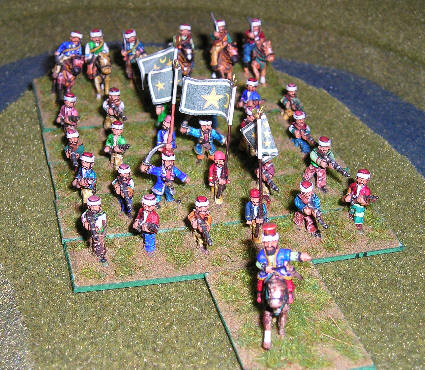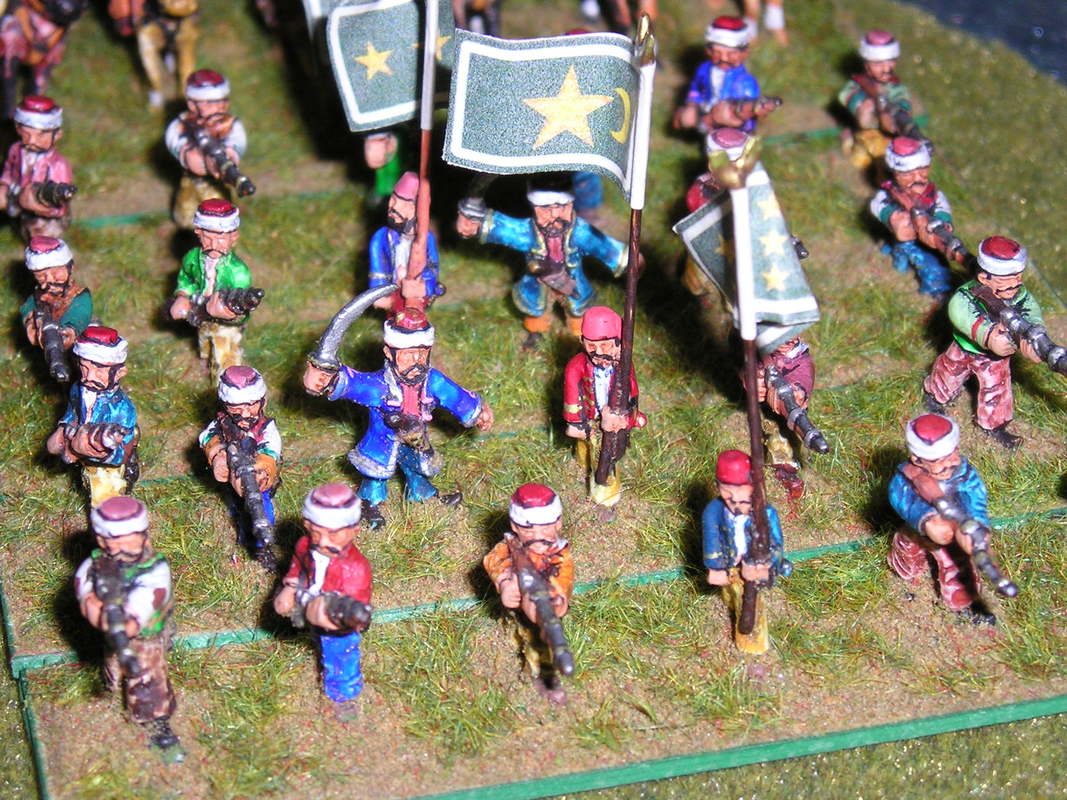- Home
- About
-
Travel
-
Features
- Dyrrachion1081
- Normans in the Balkans
- Manolada 1316
- Kosovo 1389
- Castles on the Danube
- Late Medieval Bosnian Army
- Doboj 1415
- Wallachian and Moldovan troops of the Napoleonic wars
- Anchialos 917
- Slovenian Borderlands
- The Zadruga and the Military Border
- Cretan War in the Adriatic
- Salonika 1916
- Uskoks of Senj
- Siege of Klis 1537
- Eugene in the Balkans
- Moldavian Surprise 1711
- Austro-Turkish War 1737-9
- Militargrenze
- Invading Ottoman Turkey
- Siege of Ragusa 1814
- Russo-Turkish War 1806-12
- Serbian Uprising 1815
- Ali Pasha
- Ottoman Army 1826
- Aleksinac 1876
- Shipka Pass
- Slivnitsa 1885
- Romanian Army 1878
- Austrian forts 19thC
- Kumanovo 1912
- Catalca Lines
- Adrianople 1912-13
- Kajmakcalan 1916
- The other 1918 campaign
- Macedonia air war WW1
- War of the Stray Dog
- Royal Yugoslavian armed forces
- Blunder in the Mountains
- Romanian SS
- Gebirgsjager in the Balkans
- Knights Move 1944
- Vis during WW2
- HLI in the Adriatic
- Adriatic Cruel Seas
- Dalmatian Bridgehead
- Cyprus 1974
- Transnistrian War
- Ottoman Navy Napoleonic wars
- Medieval Balkans
- Balkan lockdown quiz >
- Reviews
-
Armies
- Ancient Greeks
- Pyrrhic army of Epirus
- Dacian wars
- Goths
- Late Roman
- Comnenan Byzantine Army
- Normans
- Serbian medieval
- Albanian medieval
- Wallachian medieval
- Bosnian Medieval
- Catalan Company
- Polish 17C
- Austrian Imperialist
- Ottoman
- Austrian 18thC
- Russian Early 18thC
- Ottoman Napoleonic
- Greek Revolution
- 1848 Hungarian Revolution
- Russian Crimean war
- Romanian Army of 1877
- Ottoman 1877
- Russian 1877
- Balkan Wars 1912-13
- Macedonia WW1
- Greece WW2
- Italian Army WW2
- Gebirgsjager WW2
- Hungary WW2
- Turkey WW2
- Soviet Union WW2
- Bulgaria WW2
- Turkish Korean War Brigade
- Balkan Wars 1990s
- Links
- Books
The Ottoman Army of the Greek War of Independence
(For the Principles of War wargame rules)
After completing a Greek army for the War of Independence (1821-29) I turned to the formation of the opposing Ottoman army. From my initial reading I had assumed that large numbers of my Napoleonic Ottoman army could be used with some additional Albanian irregulars. I was therefore a little surprised when turning to the Principles of War (PoW army) lists to find an almost totally regular army.
All army lists are inevitably compromises between the wide time scale and variety of troops available in most states. This is particularly true of the Ottoman Empire in the 1820’s, a period of considerable change. The army list which covers 1820 to 1850 is therefore a reasonable portrayal of an Istanbul based force later in that period. However, it is not representative of the Ottoman forces fighting mainly in (what is today) central Greece during the war of independence.
The beginning of the 19th century had seen several attempts to modernise the Ottoman army and in particular the Janissary corps. The Nizam-i Cedit and then the Segban-i Cedit both foundered on Janissary revolts against the introduction of western ideas. Sultan Mahmut II (1808-39) shared many of the early reforming ideas but he wisely bided his time. In the Ottoman province of Egypt, Muhammad Ali using European officers created a western style army called the Nizamiye, or “ordered” army. This army performed well in Arabia, Syria, Anatolia as well as in Greece, which further encouraged Mahmut along the path of reform.
The culmination of his planning was the destruction of the Janissaries (and associated corps) in 1826, known as the Auspicious Event. The new army (Mansure) had regiments and battalions on western lines and quickly expanded to the provinces, with officers appointed by the commander (Serasker) in Istanbul. Cavalry, artillery and supply units were organised in 1827 replacing the old corps. However, this still left the largest elements of the old armies, the feudal and irregular forces. In principle these groups were organised into the Mansure by decree in February 1828. Feudal cavalry was organised into battalions with fief holders becoming officers and the irregular Yoruks were organised into four battalions.
A new army could not be created overnight. There was the inevitable resistance to change and new officers could not be trained quickly enough. By the start of the Russo-Turkish War of 1828 the army had some 60,000 infantry and artillery with an additional 20,000 cavalry and 97,000 traditional irregulars. Their inadequate training resulted in complete defeat by the summer of 1829 and the subsequent establishment of a small Greek state.
After this war and the subsequent First Egyptian War 1831-33, Mahmut continued the creation of a centralised state. Although it was not until 1838 that all fighting corps were incorporated into the Mansure. In 1834 a major step was taken with the establishment of the Redif militia battalions in every province, totalling 120 battalions in 1836. The 1830’s also brought an influx of foreign advisers and centralised uniform and weapon manufacturing. After Mahmut’s death in 1839 reform continued during what is known as the Tanzimat era to create the basis for a modern state.
So how does this impact on the PoW army list for the Greek war of Independence?
From 1821 to 1826 it seems clear that the Ottoman army would look little different from the Ottoman Napoleonic period army, although there is little evidence of many Janissaries actually fighting in Greece. After 1826 Nizam battalions would begin to appear but very few would have been created in the Ottoman provinces near Greece and the Istanbul battalions would be focussed on the Russian threat. There was no Redif at all until 1834 so they have to be deleted completely from the list.
Any list has to be largely conjectural as no orbats as such are available. A better understanding may become available as the Ottoman archives are studied by academics working in this field. English language histories focus mainly on Greek forces and only loosely describe Ottoman forces in numerical terms. There were about 30,000 Ottoman troops in the Rumeli area of operations in 1826, dropping to little more than 10,000 at the outbreak of the Russo-Turkish war.
On balance descriptions of Ottoman forces in the War of Independence would indicate a post 1826 army with most of the elements from the Napoleonic list, However, there should be some limited recognition of the Mansure reforms with some Nizam battalions. In addition the available provincial forces would be stronger in infantry than the Napoleonic list and those additional troops would mostly be Albanian irregulars. I would therefore suggest the list below for the late war (1826-29) Ottoman army commanded by Reshid Pasha in Rumeli (central Greece).
If you want to use a regular force the published list is still broadly suitable for the Egyptian army that operated in the Morea commanded by Ibrahim Pasha.
Uniform and Figure Note
The new infantry regiments wore a Greek cap (tarbuche) over a close fitting cap (tequi) with coat colours varying between regiments (light blue, dark blue, red and chesnut). Red leather boots and white belts and girdle. Cavalry had similar uniforms except one brigade had green instead of red dolmans. Boots were black and the girdle red. Artillery and engineer uniforms were the same as infantry with red coats. See Osprey MAA 314 for the traditional troops.
My 15mm Ottoman figures came from Napoleonic ranges mostly Minifigs, AB Figures, Naismith and Battle Honours. The additional figures came from the most comprehensive range for this war produced by Spiros Koumoussis, sadly no longer available.
(see below for examples of Spiros's range from the editor's collection)
Further Reading
For a general history of the war with some emphasis on the military history:
Douglas Dakin The Greek Struggle for Independence Batsford 1973
For a more detailed description of Ottoman military reform:
Stanford Shaw History of the Ottoman Empire (Volume 2) Cambridge 1977
Baron von Moltke The Russians in Bulgaria and Rumelia in 1828-9 Pallas Armata 1995
Dakin and Shaw both have detailed bibliographies.
A version of this article appeared in PoW Magazine.
After completing a Greek army for the War of Independence (1821-29) I turned to the formation of the opposing Ottoman army. From my initial reading I had assumed that large numbers of my Napoleonic Ottoman army could be used with some additional Albanian irregulars. I was therefore a little surprised when turning to the Principles of War (PoW army) lists to find an almost totally regular army.
All army lists are inevitably compromises between the wide time scale and variety of troops available in most states. This is particularly true of the Ottoman Empire in the 1820’s, a period of considerable change. The army list which covers 1820 to 1850 is therefore a reasonable portrayal of an Istanbul based force later in that period. However, it is not representative of the Ottoman forces fighting mainly in (what is today) central Greece during the war of independence.
The beginning of the 19th century had seen several attempts to modernise the Ottoman army and in particular the Janissary corps. The Nizam-i Cedit and then the Segban-i Cedit both foundered on Janissary revolts against the introduction of western ideas. Sultan Mahmut II (1808-39) shared many of the early reforming ideas but he wisely bided his time. In the Ottoman province of Egypt, Muhammad Ali using European officers created a western style army called the Nizamiye, or “ordered” army. This army performed well in Arabia, Syria, Anatolia as well as in Greece, which further encouraged Mahmut along the path of reform.
The culmination of his planning was the destruction of the Janissaries (and associated corps) in 1826, known as the Auspicious Event. The new army (Mansure) had regiments and battalions on western lines and quickly expanded to the provinces, with officers appointed by the commander (Serasker) in Istanbul. Cavalry, artillery and supply units were organised in 1827 replacing the old corps. However, this still left the largest elements of the old armies, the feudal and irregular forces. In principle these groups were organised into the Mansure by decree in February 1828. Feudal cavalry was organised into battalions with fief holders becoming officers and the irregular Yoruks were organised into four battalions.
A new army could not be created overnight. There was the inevitable resistance to change and new officers could not be trained quickly enough. By the start of the Russo-Turkish War of 1828 the army had some 60,000 infantry and artillery with an additional 20,000 cavalry and 97,000 traditional irregulars. Their inadequate training resulted in complete defeat by the summer of 1829 and the subsequent establishment of a small Greek state.
After this war and the subsequent First Egyptian War 1831-33, Mahmut continued the creation of a centralised state. Although it was not until 1838 that all fighting corps were incorporated into the Mansure. In 1834 a major step was taken with the establishment of the Redif militia battalions in every province, totalling 120 battalions in 1836. The 1830’s also brought an influx of foreign advisers and centralised uniform and weapon manufacturing. After Mahmut’s death in 1839 reform continued during what is known as the Tanzimat era to create the basis for a modern state.
So how does this impact on the PoW army list for the Greek war of Independence?
From 1821 to 1826 it seems clear that the Ottoman army would look little different from the Ottoman Napoleonic period army, although there is little evidence of many Janissaries actually fighting in Greece. After 1826 Nizam battalions would begin to appear but very few would have been created in the Ottoman provinces near Greece and the Istanbul battalions would be focussed on the Russian threat. There was no Redif at all until 1834 so they have to be deleted completely from the list.
Any list has to be largely conjectural as no orbats as such are available. A better understanding may become available as the Ottoman archives are studied by academics working in this field. English language histories focus mainly on Greek forces and only loosely describe Ottoman forces in numerical terms. There were about 30,000 Ottoman troops in the Rumeli area of operations in 1826, dropping to little more than 10,000 at the outbreak of the Russo-Turkish war.
On balance descriptions of Ottoman forces in the War of Independence would indicate a post 1826 army with most of the elements from the Napoleonic list, However, there should be some limited recognition of the Mansure reforms with some Nizam battalions. In addition the available provincial forces would be stronger in infantry than the Napoleonic list and those additional troops would mostly be Albanian irregulars. I would therefore suggest the list below for the late war (1826-29) Ottoman army commanded by Reshid Pasha in Rumeli (central Greece).
If you want to use a regular force the published list is still broadly suitable for the Egyptian army that operated in the Morea commanded by Ibrahim Pasha.
Uniform and Figure Note
The new infantry regiments wore a Greek cap (tarbuche) over a close fitting cap (tequi) with coat colours varying between regiments (light blue, dark blue, red and chesnut). Red leather boots and white belts and girdle. Cavalry had similar uniforms except one brigade had green instead of red dolmans. Boots were black and the girdle red. Artillery and engineer uniforms were the same as infantry with red coats. See Osprey MAA 314 for the traditional troops.
My 15mm Ottoman figures came from Napoleonic ranges mostly Minifigs, AB Figures, Naismith and Battle Honours. The additional figures came from the most comprehensive range for this war produced by Spiros Koumoussis, sadly no longer available.
(see below for examples of Spiros's range from the editor's collection)
Further Reading
For a general history of the war with some emphasis on the military history:
Douglas Dakin The Greek Struggle for Independence Batsford 1973
For a more detailed description of Ottoman military reform:
Stanford Shaw History of the Ottoman Empire (Volume 2) Cambridge 1977
Baron von Moltke The Russians in Bulgaria and Rumelia in 1828-9 Pallas Armata 1995
Dakin and Shaw both have detailed bibliographies.
A version of this article appeared in PoW Magazine.


